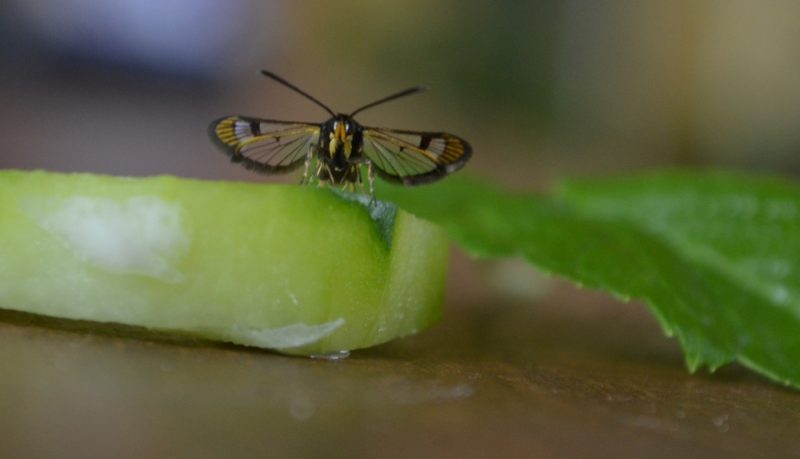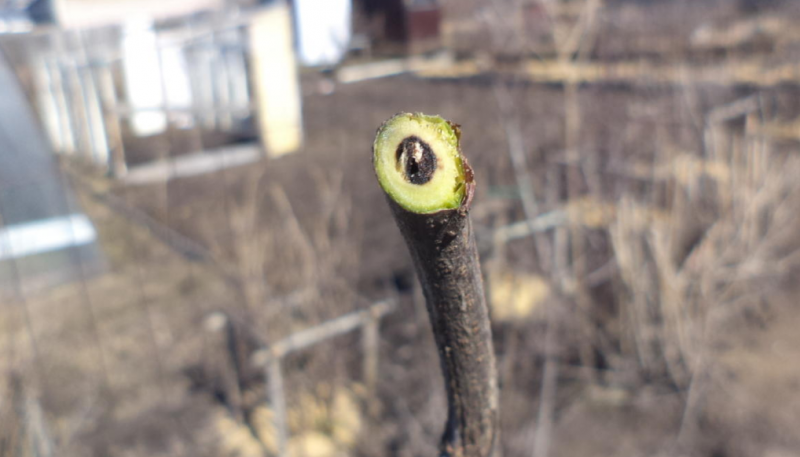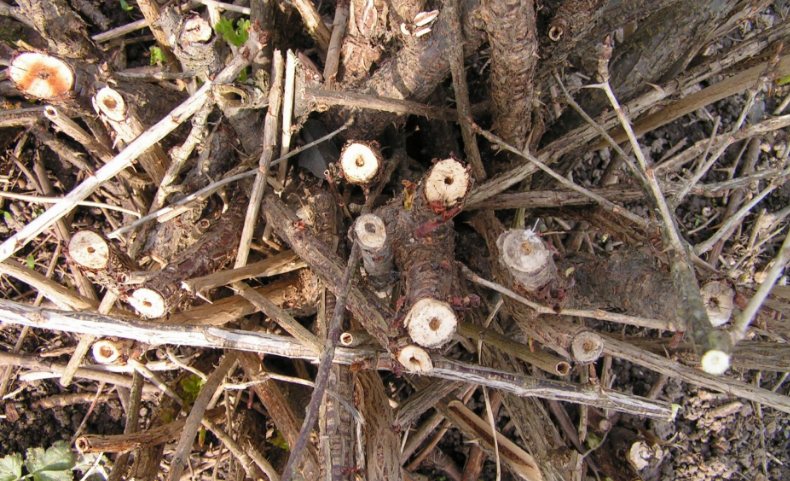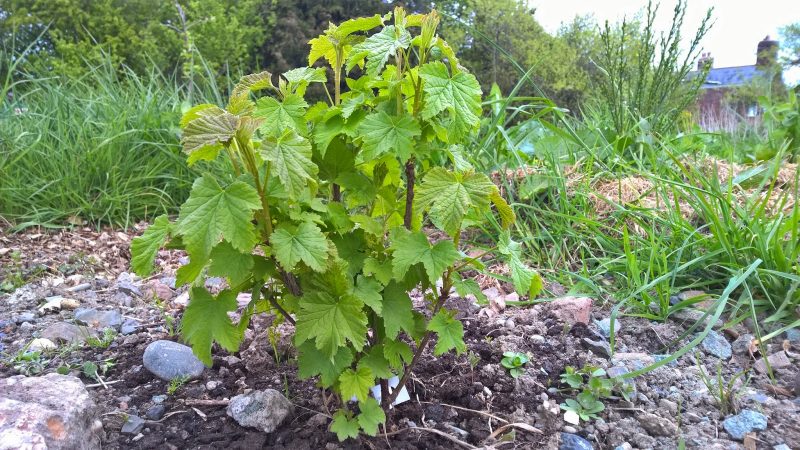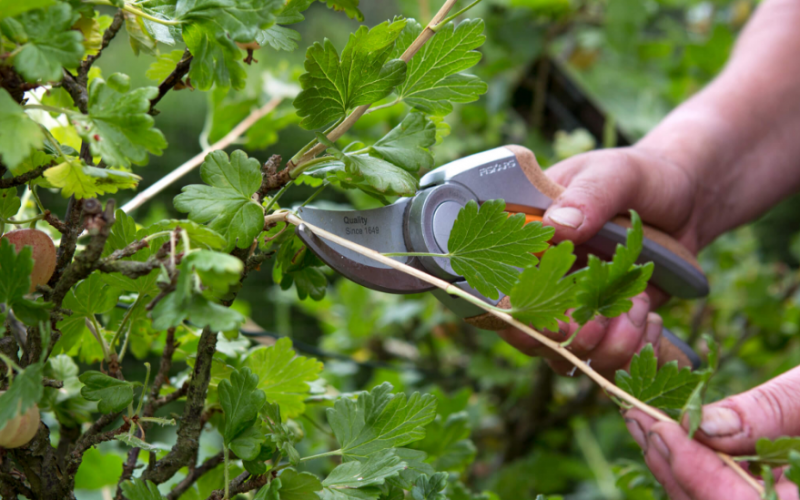If a glass-case on a currant is wound up in the garden, it will not be easy to get rid of it - this insect can destroy all hopes for a good crop and destroy the bushes. You can notice infection by inhibited growth and shredding of leaves. It is difficult to see the pest, since it is a parasite inside the wood, and it is even more difficult to fight it.
Material Content:
What is glass
Butterfly glass is a pest insect against which there are no resistant varieties of currant and effective drugs.
It belongs to the family of Lepidoptera, lays eggs on the shoots. Caterpillars hatch from the eggs of the insect, they bite into the wood and eat the core of the shoots. The pest parasitizes on various types of trees, shrubs, roots of herbaceous plants.
More than a thousand species of glassware are known, about 100 of them live in Europe. In appearance, large butterflies resemble wasps, they have a yellow abdomen and transparent or brownish wings, the span of which can be from 1 to 5 cm.
The larva of the butterfly lives in the shoot for 2 to 3 years, causing him great harm during this time. The yield is reduced, the branches die off, breaking off at the exit of the caterpillar to the outside to turn into a butterfly. A glass-case on blackcurrant lays eggs during the flowering of the plant, and also parasitizes on redcurrant, gooseberries, raspberries.
Signs and symptoms of currant damage
The first sign of a currant's defeat in a glass-case is the withering tops of the shoots. It is easy to identify shoots damaged by larvae - these are branches with small leaves or withering and drying out for no apparent reason.
If you cut damaged branches in parts, you can notice a black core inside. This is the place where the larva ate the living tissue of the plant.
The shoots are cut to a healthy place until the core is light, and all the scraps are immediately burned.
Pest Control
There are no effective insecticides against glass, so they are struggled with it mainly with the help of pruning shears, pruning. All damaged shoots are cut and burned. Pest control measures should be versatile and include not only the destruction of larvae, but also repelling adult insects during the flight so that they do not lay eggs on the bushes.
Agrotechnical methods
You need to carefully inspect the branches during fruiting, if somewhere the berries were chopped or not at all - this may be a sign of damage to the glass-case. Sick branches need to be cut with secateurs to healthy wood. A glass-caterpillar caterpillar develops inside the wood for 2 years. If you cut off the entire shoot infected with the pest and immediately burn it, you can control the spread of parasites
When the glass-box takes off, currants bloom. This is the end of May, June.
The main, mechanical way of controlling insects is thinning bushes.
Old branches are cut so that the plant is well ventilated, and mulch the soil 10-15 cm.
During the flight of insects, various traps can be placed under the currant bushes, for example, sweet molasses at a height of 50 cm from the ground. An adult glass case is resistant to insecticides, so it is difficult to fight it with chemical means alone.
Chemicals
After the berries are tied in the currant, it is advisable to treat the bushes with one of the insecticides against aphids, glass and other pests that damage the leaves.
Popular chemicals:
- Confidor Extra;
- "Tanrek";
- "Chord";
- "Alatar";
- "Fufanon."
During flowering, processing can not be carried out so as not to destroy the bees. A certain amount of time must pass from the moment of spraying to the harvest, so that harmful chemicals decompose. Proponents of natural farming can use folk methods to get rid of the glass.
It is interesting:pruning raspberries in the fall
Folk recipes
If a glass box has started up on the site, all methods will be good in dealing with it. Cutting out all the affected branches to live tissue in spring, they try to scare away adult insects from healthy plants.
From May to June, loosen the soil under the currant bushes, add ash to it and sprinkle everything around with tobacco dust in order to restrain the spread of the pest.
Another effective folk method is planting plants that the glass-box does not tolerate.
Between the currant bushes, you can put beds of onions and garlic, plant marigolds or marigolds. Elderberry will be a good neighbor for currants - its smell repels insect pests.
During the flight of the glasshouse, currant bushes are treated with sharply smelling infusions. Prepare them on tansy, garlic, wormwood, needles.
For the fight also use various improvised means:
- Containers with molasses or fermented jam with a narrow neck. Crawling inside on an attractive sweet bait, the insect cannot get out.
- Sticky double-sided tape is hung on the branches of a bush. Do not get too carried away so as not to scare off pollinating bees.
- The smell of diesel fuel repels insects, and buckets with sand soaked in this liquid are placed under flowering bushes.
Near the currant, it is undesirable to plant raspberries, gooseberries, bird cherry - these plants attract a glass-butterfly and can contribute to the spread of the pest.
Preventative measures
The currant bushes have a lifespan of 10 years, so in order not to be left without a crop, young bushes need to be planted.
It is advisable to buy planting material in a nursery so that it is not initially infected with a glasshouse.
New currant seedlings are not planted in the place where the currant infected with pests used to grow.A break for soil improvement is done for at least 2 years. The site is dug up in the fall, insecticides and fungicides are introduced into the soil to destroy insect pests and pathogenic fungi.
If bush branches are damaged by the pest, they cannot be sent to compost. The plant must be burned, because the glass-case has the property of being in diapause until the favorable conditions for development come again.


